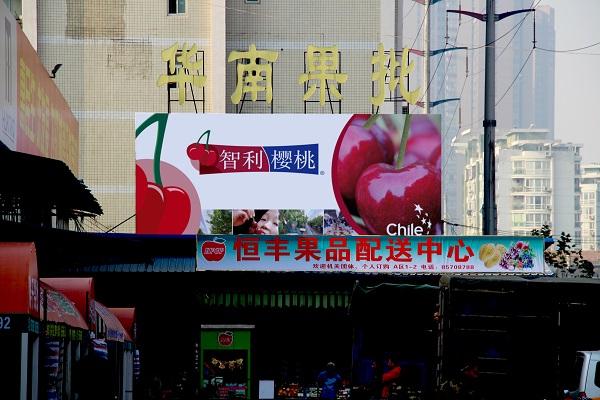You are here
Back to topChina: The Challenges of a Market where Chilean Exports are Growing

In the past two weeks, Chile was visited by Chinese Premier Li Keqiang and the Minister of the General Administration of Quality Supervision, Inspection, and Quarantine (AQSIQ), Zhi Shuping. From the visits, one thing is certainly clear: there are good and growing trade relations between Chile and China, offering potential for Chile's export sector, and for fresh fruit in particular.
During the 2013-14 season (September 1, 2013 to August 31, 2014) Chile exported a total of 342,904 tons of fresh fruit to Asia. More than 104,000 tons were destined for China, including table grapes, cherries, apples, plums, kiwis, and blueberries. The volume of fruit shipments has been increasing year after year, thanks to an increase in exports and the opening of the market to new Chilean fruits.
However, further growth requires taking into account key factors, according to Andrea Betinyani, Head of the Information Department at Decofrut. These factors are related to three important aspects: quality, aesthetics, and logistics.
"The main key is to meet the high quality standards and requirements of the Chinese market. This is a market that demands that fruit meet certain aesthetic standards such as color and size, along with internal quality standards such as flavor and sweetness. China is a market with great development potential and it is important to know the country well," Betinyani said.
Logistics is key to the sector since the fruit must travel long distances, sometimes taking 30-40 days to reach its destination, yet must still arrive in the conditions the consumer expects.
"Asian markets such as China are also demanding from a logistics point of view, requiring special care in management, harvesting and post-harvest technologies, and selecting varieties that can reach the market in good condition, meeting the necessary conditions," added Andres Armstrong, Executive Director of the Chilean Blueberry Committee.
Consumer trends also play a major role. According to Charif Christian Carvajal, Marketing Manager of ASOEX for Asia and Europe, the main consumer factors in the Chinese market are related to issues such as food safety, ease of shopping, the increase of Western chain stores, and new markets within China which have great potential.
"There is a growing penetration of Western retail chains, which helps introduce new products and influences consumer habits. In addition, we are working on promotions and strategies with representatives of wholesale markets in second-tier cities in China such as Wuhan, Ningbo and Shenyang among others," explained Carvajal.
"The phenomenon of online sales in Asia is something we have considered and promoted as a sales channel. The concern for healthy eating in Asia makes a product such as blueberries garner a lot of interest from consumers; their view of blueberries as a 'super fruit,' high in antioxidants and vitamins, makes this fruit a favorite,” Armstrong noted.
He went on to say, "For now, Chile is the only country with the ability to sell fresh blueberries to China, but other competition may come in the future. The challenge here is to increase the consumer base."
Armstrong said he is very positive about what is happening with local Chinese production, which has had significant increases in crop planting area, helping to promote awareness of this fruit and its consumption. "Our production is complementary to local production, generating more weeks of available product on the shelves, which is a very helpful aspect for increasing consumption," he said.
Image Source: SimFRUIT















Add new comment